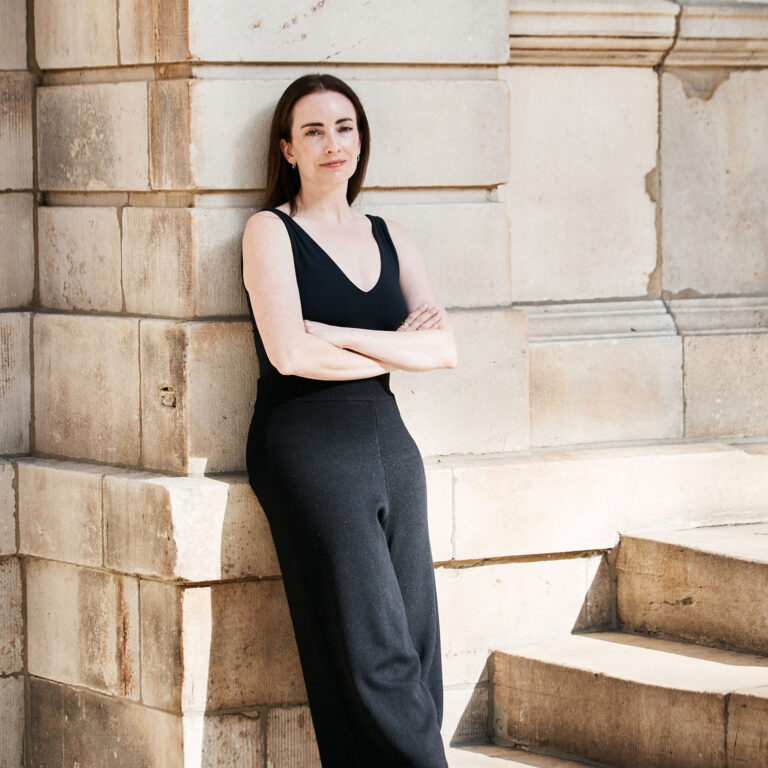
Débora Mesa and Antón Garcia-Abril were not looking for the quarry they would end up transfiguring into a living space. The quarry found them. Dark, humid and overrun by animals, the Mares stone quarry on the Spanish Balearic island of Menorca had been abandoned for nearly a century. But the duo behind the Spain- and Boston-based architecture practice Ensamble Studio didn’t see it for what it was. They saw it for what it could be: a home.
In the summer of 2019, Ca’n Terra, which translates as “house of the Earth,” was born. Today, an interactive virtual exhibit commissioned by ‘T’ Space gallery in Rhinebeck, New York allows viewers to step into the earth and see what the architects saw back then: an unconventional, underground space that reflects Ensamble’s approach where technology is a tool and architecture is the goal.

“The full project starts with a discovery,” says Garcia-Abril. “The only credit we deserve for this project is being capable to understand it not as a dump yard but as a marvel.” Using cutting-edge laser technology, the Ensamble team surveyed every inch of the quarry to create a digital map. They then intervened within it, carving out skylights and turning negative space into breathing space. When the shell was ready, they built facades out of translucent screen membranes, added a hot and cold water system and furnished the insides with nothing but bare necessities. The studio uses the home as a landscape laboratory for experience and interaction, and sometimes a retreat.
To realize the exhibition Ca’n Terra: Architecture of the Earth, which will be on view at ‘T’ Space until October 31, the team in Spain returned to the site to take hundreds of 3D photos of Ca’n Terra. Combining on-site scans, maps and spherical images, the virtual reality exhibit is a continuation of the architects’ ongoing research. “The original idea was that we would be giving our own virtual tour. We had to make some adjustments,” says Mesa, in a video interview from the house in Brookline, Massachusetts, where she lives with Garcia-Abril, her “partner in life and in crime,” as he puts it. In the wake of COVID-19, the pair could not return to Menorca, where they had envisioned welcoming visitors in the flesh.

Mesa and Garcia-Abril met at the School of Architecture of the Polytechnic University of Madrid. Garcia-Abril began Ensamble in 2000 and Mesa joined the studio three years later. In 2012, the pair relocated to the United States and co-founded POPlab—a prototype and prefabrication laboratory that bridges the gap between science and art at MIT. Then three years later, they designed and built the Massachusetts home where they now live. Constructed atop an old garage, the two-story house offers a glimpse of their approach to work and life. “For us there’s never been a home and an office. Home is both,” says Garcia-Abril. Their respective video call backgrounds certainly give this away. Her wall displays three children’s drawings poking from the top of the screen; his is plastered with models hanging like picture frames.

The pair’s obsession with models is evident. Cardboard explorations, towers made of staples and wrinkled paper houses take up the entire screen. Garcia-Abril brandishes a series of Nespresso boxes folded into a concept model. “This is the confinement series,” he laughs.
“We like to work with our hands,” says Mesa, whose process always starts with models. From there, the duo uses 3D scanners to translate those physical shapes into a digital format. “3D scans gives us the ability to go from the physical to the digital very quickly and work in both at the same time,” she explains.

With Ca’n Terra, the model, so to speak, was already built, an objet trouvé waiting to be polished. “The history of architecture has always operated from data to matter,” says Garcia-Abril. “Now, technology gives us the ability to do this in reverse.” For the Ensamble Studio founders, technology appears as a facilitator, the means to an architectural end that is shaped by scientific knowledge yet never driven by it. The approach is always the same, and “it’s this curiosity to work with things that excite us,” says Mesa.
The studio sure knows how to create excitement. In 2010, they built a 270-square-foot living room out of concrete and hay. They then used quarry machinery to reach the captured hay within, and let a calf named Paulina reveal the void inside by eating away at the hay for a year. The pair’s former house in Madrid, which they designed and built for themselves in 2008, is also a feat of engineering featuring a web of beams and a cantilevering pool. Currently, the studio is working on a 200-foot tall museum in the Arabian Desert, exploring the material properties of concrete, sand and synthetic materials in a desert setting. “Technology is a sophisticated tool, but there’s nothing more complex than this biobot,” says Garcia-Abril, waving an open hand in front of the computer screen. “It’s a matter-to-data-to-matter combination,” he adds. “This is the beauty of the technology that has connected us more intimately and more directly with the material world.”










 in your life?
in your life?

